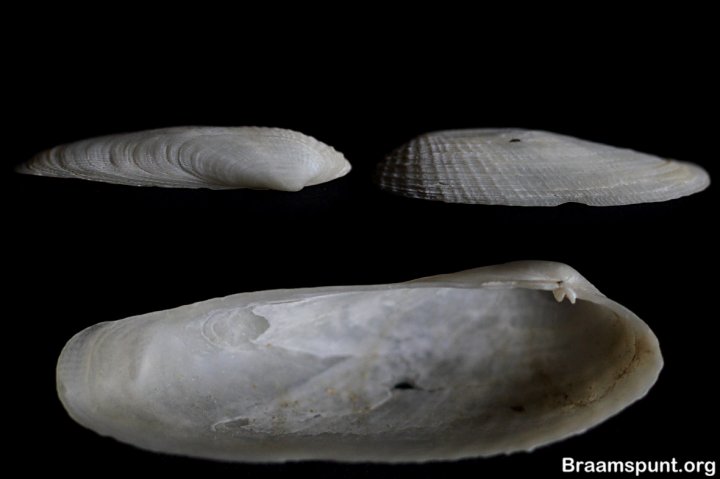|
Petricola foladiformis
Petricola pholadiformis (Lamarck, 1818) - False angel wing, American piddock Up to 4 cm long, oval, thin, and the beaks are very anterior. Broader and shorter anteriorly but comes to a sharper point than the narrow, elongated, gaping posterior end. Off-white ( fawn) or white in color with a dark brown periostracum. Sculpture consists of over 40 radial ribs and numerous (but less obvious fine concentric growth lines). These radial ribs are less numerous anteriorly, but are larger, rougher, more widely spaced and bear sharp spines (used in boring), the margin thus being crenulated in this region but smooth elsewhere. Posteriorly they become more numerous but fainter and lack the spines. The cardinal teeth are long and pointed there being 2 in the right valve (of which the posterior one is grooved along its length i.e bifid) and 3 in the left valve. The anterior 2 protrude into the mantle cavity (as in the right valve), but the posterior one is parallel with the hinge line and does not protrude. This posterior tooth may not be very obvious in worn specimens. The median cardinal tooth is bifid. Lunule well defined. The interior of the shell is white but not very smooth as the ribs show through. Bores horizontally and mechanically (i.e without use of enzymes or acids). Can also be found in salts marshes. It resembles small specimens of Pholas campechiensis ( Pholadidae) but lacks the umbonal reflection (‘viaduct’). This specimen is very rare. |
